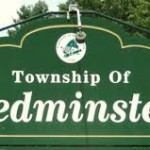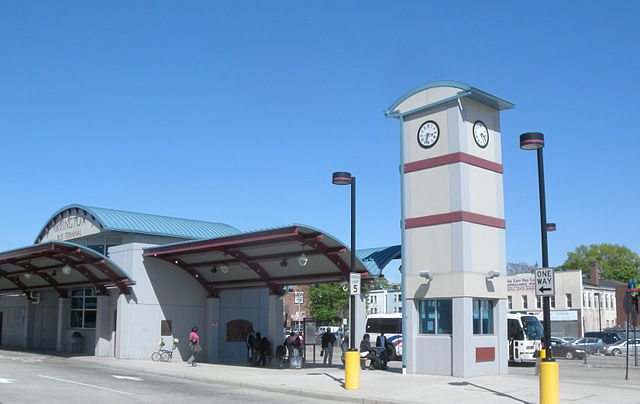New Jersey Future Blog
New Zoning Codes: More Housing Options, More Mixed Use, Less Parking
February 9th, 2016 by Elaine Clisham
A look at updated zoning codes from several Northeast cities shows some common strategies to use their land more flexibly to meet changing needs.

Mixed-use development near Metuchen’s train station. Photo source: nj.com
In what in each case was a long, uphill fight, three cities in the Northeast have updated their zoning codes. (Washington, D.C., and Hartford, Ct., have passed their codes at least in part; Baltimore’s is still awaiting adoption.) And while each new code is in many ways unique to the place it regulates, there are several important themes running through all three that municipalities everywhere can learn from and implement, including:
More flexible housing options. Washington, D.C., is making it easier to rent out accessory apartments, and is streamlining the permitting process for conversion of things like garages to housing units. Baltimore will permit areas around transit to be designated for higher-density, lower-parking residential development, and will allow disused industrial buildings to be converted to artist live-work space. The city is also looking at what kind of streamlining would be appropriate for conversion of single-family row houses to multi-family.
Hartford has not yet adopted more flexible housing regulations, but will schedule a series of meetings to discuss the need for the city to accommodate what it calls “new living arrangements,” including how a “household” is defined, and how to accommodate accessory units, Airbnb rentals, roomers and boarders, etc.
These three efforts all recognize that a) there is significant unmet housing demand in their cities, and in particular unmet demand for smaller, more affordable types of housing, and b) that there are ways to meet that demand that don’t significantly alter the existing character of the neighborhood. Where appropriate, similar measures can be adopted in many places in New Jersey.
Walking to the corner store is back. Both Baltimore and Washington had eliminated the option for a corner store to locate on the ground floor of a residential building in a primarily residential neighborhood. Their new codes ease restrictions on such stores. In Hartford’s new code there is an emphasis on making neighborhoods more walkable and bicycle/pedestrian friendly, and a greater emphasis on form rather than use. All these measures mean that people without cars, including older residents, will be better able to secure some of their everyday necessities just by walking down their block.
A recent analysis shows that many New Jersey communities are not particularly walkable, and do not have a broad mix of retail and amenities within a short distance, making it more difficult for people who don’t drive to live there. As the state’s population grows older, towns will need to pay more attention to this, or risk losing residents.
Lower parking minimums. In all three cities, parking regulations for development near transit facilities will be reduced, acknowledging the reality that an over-supply of parking encourages driving rather than transit usage (and hence leads to the unvirtuous cycle of increased traffic congestion, carbon emissions and road expansion), and is an expensive use of land that sits vacant much of the time.
In areas of New Jersey that are well served by transit, instead of too much parking, tools like time limits for short-term parking, replacing parking minimums with parking maximums, and transit subsidies for nearby residents and employees can be used to manage parking demand while maximizing development potential. Metuchen is already pursuing several of these strategies: Following the recommendations of a parking study, the Metuchen Planning Board amended the borough’s master plan in 2014 to reduce minimum parking requirements by 50 percent, establish maximum parking requirements, and permit payments in lieu of parking (“PILOP”) in its downtown.
All of these measures have lessons for New Jersey communities of any size. In what is universally acknowledged to be a very high-cost state in which to live, municipalities that want to grow and thrive should be looking for appropriate ways to generate more housing, and in particular a wider diversity of housing sizes and types; to make their communities more walkable; to put a wide variety of desired uses within walkable distance; and to reduce inducements to drive.
















